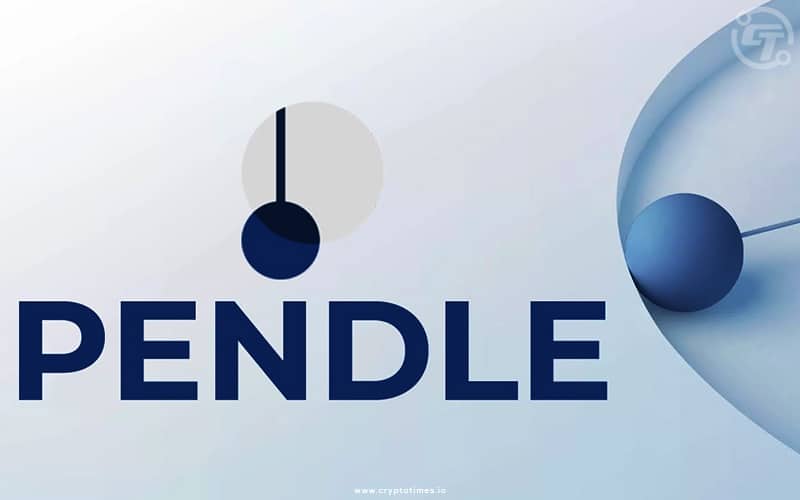Pendle Finance® | Official Site | Home
Truth is, you can't say for sure. Yield fluctuates just like token prices. It tends to go up in bull markets, and go down in bear markets, and there are further micro-factors that cause fluctuations within those general market trends.
What does Pendle finance do?
We give users the reins to their yield. Pendle is a permissionless yield-trading protocol where users can execute various yield-management strategies.
- Yield Tokenization First, Pendle wrap yield-bearing tokens into SY(standardized yield tokens), which is a wrapped version of the underlying yield-bearing token that is compatible with the Pendle AMM (e.g. stETH → SY-stETH). SY is then split into its principal and yield components, PT (principal token) and YT (yield token) respectively, this process is termed as yield-tokenization, where the yield is tokenized into a separate token.
- Pendle AMM Both PT and YT can be traded via Pendle’s AMM. Even though this is the core engine of Pendle, understanding of the AMM is not required to trade PT and YT.
- vePENDLE As a yield derivative protocol, we are bringing the TradFi interest derivative market (worth over $400T in notional value) into DeFi, making it accessible to all.
- By creating a yield market in DeFi, Pendle unlocks the full potential of yield, enabling users to execute advanced yield strategies, such as: Fixed yield (e.g. earn fixed yield on stETH) Long yield (e.g. bet on stETH yield going up by purchasing more yield) Earn more yield without additional risks (e.g. provide liquidity with your stETH) A mix of any of the above strategies, learn more on how to execute these strategies at our Pendle Academy
What is the difference between Pendle Earn and Pendle Trade?
Pendle Earn and Trade run on the same set of contracts and use the same tokens. Pendle Earn is streamlined to perform the two main functions that are predicted to have the highest traffic (Fixed Yield and Liquidity Provision) in order to create a better UX for the majority of users. Pendle Trade gives users the full suite of functions on Pendle allowing users to trade yield by buying and selling PT and YT. You can switch between the two modes using the toggle at the top right corner of the app.
What is an epoch?
For Pendle, an epoch is exactly one week. Each epoch starts and ends at Thursday, 00:00 UTC. Snapshots of vePENDLE voting are taken every epoch, and non-yield rewards (e.g. $CRV, $CVX tokens) are also distributed every epoch.
Why is the Underlying APY shown on Pendle differ from the APY shown in the underlying protocol?
The Underlying APY displayed on Pendle is a 7-day average of the underlying protocol (with some assets like GLP as exceptions) to smoothen out short-term fluctuations of the underlying protocol's APY.
Do I have to stake my LP to earn rewards?
No, you do not have to stake LP tokens. All LP token holders will receive their fair share of the rewards.
How does vePENDLE work?
Lock PENDLE for vePENDLE. The greater the lock duration, the greater your vePENDLE value. Your vePENDLE value decays over time, but your lock duration can be extended to negate the decay.
Use vePENDLE to channel PENDLE incentives. Vote for your desired pool to incentivize liquidity. The more vePENDLE you have, the more voting power you hold. Voting for a pool entitles the you to 80% of the swap fees collected by the pool. This APY is shown in the "Voter APY" prior to casting your vote.
vePENDLE holders also receive a portion of protocol revenue, earned from swap fees and YT fees.
When does my PENDLE unlock?
vePENDLE resides solely on the Ethereum blockchain, meaning you can only lock PENDLE and vote from Ethereum, but you can vote for pools on other chains. So incentives can be channelled to other blockchains via voting, but again, voting is only done on Ethereum.
What risks are there associated with using the protocol?
Since Pendle interacts with third-party protocols and contracts, there is inherent risk associated with the smart contracts and systems deployed by the third-party protocols. Pendle is not responsible for any funds lost due to exploits in third-party contracts.
The Pendle codebase has been fully audited by reputable auditors and all flaws have been addressed. Read the audit reports here. Nonetheless, users are advised to exercise caution and deploy funds prudently.
The Underlying APY displayed on Pendle is a 7-day average of the underlying protocol (with some assets like GLP as exceptions) to smoothen out short-term fluctuations of the underlying protocol's APY.
Conclusion
On Pendle, LPs have the option to activate Zero Price Impact Mode, which allows them to provide liquidity to the PT/SY pool without affecting the price. Normally, when liquidity is added, a portion of the underlying asset is used to purchase PT from the PT/SY pool and the rest is wrapped into SY. However, this purchase of PT can cause a price impact. With Zero Price Impact Mode enabled, the underlying asset is fully wrapped into SY, a portion of which is used to mint PT and YT. The PT and remaining SY are then used for liquidity provision, with the YT returned to the user's wallet. This eliminates the step of purchasing PT, thereby avoiding any potential price impact.
